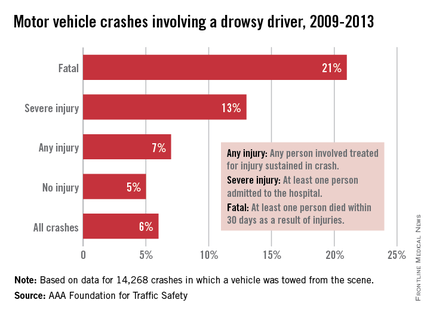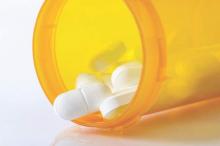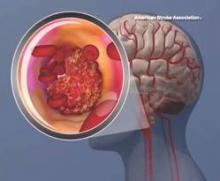User login
VIDEO: Social networking offers coping help for endometriosis patients
VANCOUVER – Nearly half of the discussion topics on the social networking site www.myendometriosisteam.com are about pain, but other uncontrolled symptoms are popular topics, including fatigue and depression.
The online social support network includes 30,000 women with endometriosis and offers them a chance to connect with other women with the condition, find a provider, and research treatments. Elise-Marie Menke, director of alliance management at MyHealthTeams, which runs the site, presented data at the World Congress on Endometriosis. Among the findings she presented was how symptoms mapped to a woman’s cycle.
In a video interview, Ms. Menke described how this type of patient-generated data can play a role in the management of disease and serve to highlight unmet needs to physicians.
The video associated with this article is no longer available on this site. Please view all of our videos on the MDedge YouTube channel
VANCOUVER – Nearly half of the discussion topics on the social networking site www.myendometriosisteam.com are about pain, but other uncontrolled symptoms are popular topics, including fatigue and depression.
The online social support network includes 30,000 women with endometriosis and offers them a chance to connect with other women with the condition, find a provider, and research treatments. Elise-Marie Menke, director of alliance management at MyHealthTeams, which runs the site, presented data at the World Congress on Endometriosis. Among the findings she presented was how symptoms mapped to a woman’s cycle.
In a video interview, Ms. Menke described how this type of patient-generated data can play a role in the management of disease and serve to highlight unmet needs to physicians.
The video associated with this article is no longer available on this site. Please view all of our videos on the MDedge YouTube channel
VANCOUVER – Nearly half of the discussion topics on the social networking site www.myendometriosisteam.com are about pain, but other uncontrolled symptoms are popular topics, including fatigue and depression.
The online social support network includes 30,000 women with endometriosis and offers them a chance to connect with other women with the condition, find a provider, and research treatments. Elise-Marie Menke, director of alliance management at MyHealthTeams, which runs the site, presented data at the World Congress on Endometriosis. Among the findings she presented was how symptoms mapped to a woman’s cycle.
In a video interview, Ms. Menke described how this type of patient-generated data can play a role in the management of disease and serve to highlight unmet needs to physicians.
The video associated with this article is no longer available on this site. Please view all of our videos on the MDedge YouTube channel
AT WCE 2017
Materials help families find support for children with serious illnesses
Materials to support the families of children with serious illnesses have been developed by the National Institute of Nursing Research, which is part of the National Institutes of Health. The materials are associated with the NINR’s “Palliative Care: Conversations Matter” campaign.
“Palliative care is often associated with end of life, making it difficult for patients and their families – and even for healthcare providers – to start conversations around the subject. However, palliative care can be incredibly helpful for patients and their families at any stage during an illness. We hope these materials will improve patient and family understanding of pediatric palliative care and facilitate discussion with healthcare teams,” NINR Director Patricia A. Grady said in a written statement.
The resources, which include a fact sheet, a resource card to help families find support, and a series of family stories, are available in both Spanish and English. The NINR developed these materials with feedback from parents of seriously ill children. To learn more, click here
Materials to support the families of children with serious illnesses have been developed by the National Institute of Nursing Research, which is part of the National Institutes of Health. The materials are associated with the NINR’s “Palliative Care: Conversations Matter” campaign.
“Palliative care is often associated with end of life, making it difficult for patients and their families – and even for healthcare providers – to start conversations around the subject. However, palliative care can be incredibly helpful for patients and their families at any stage during an illness. We hope these materials will improve patient and family understanding of pediatric palliative care and facilitate discussion with healthcare teams,” NINR Director Patricia A. Grady said in a written statement.
The resources, which include a fact sheet, a resource card to help families find support, and a series of family stories, are available in both Spanish and English. The NINR developed these materials with feedback from parents of seriously ill children. To learn more, click here
Materials to support the families of children with serious illnesses have been developed by the National Institute of Nursing Research, which is part of the National Institutes of Health. The materials are associated with the NINR’s “Palliative Care: Conversations Matter” campaign.
“Palliative care is often associated with end of life, making it difficult for patients and their families – and even for healthcare providers – to start conversations around the subject. However, palliative care can be incredibly helpful for patients and their families at any stage during an illness. We hope these materials will improve patient and family understanding of pediatric palliative care and facilitate discussion with healthcare teams,” NINR Director Patricia A. Grady said in a written statement.
The resources, which include a fact sheet, a resource card to help families find support, and a series of family stories, are available in both Spanish and English. The NINR developed these materials with feedback from parents of seriously ill children. To learn more, click here
The Rheumatoid Arthritis Support Network
The Rheumatoid Arthritis Support Network (RASN) has the goal of providing up-to-date information and resources for rheumatoid arthritis patients so that they know their options and fully understand their diagnosis.
The RASN provides information on what causes RA, its symptoms, treatment options, positive lifestyles changes that people with RA can make, and resources, such as finding a rheumatologist, support groups, up-to-date literature, blogs about RA, and apps for pain management.
For more information, visit the RASN website (www.rheumatoidarthritis.org), send an email (info@rheumatoidarthritis.org), or call 800-405-4043.
The Rheumatoid Arthritis Support Network (RASN) has the goal of providing up-to-date information and resources for rheumatoid arthritis patients so that they know their options and fully understand their diagnosis.
The RASN provides information on what causes RA, its symptoms, treatment options, positive lifestyles changes that people with RA can make, and resources, such as finding a rheumatologist, support groups, up-to-date literature, blogs about RA, and apps for pain management.
For more information, visit the RASN website (www.rheumatoidarthritis.org), send an email (info@rheumatoidarthritis.org), or call 800-405-4043.
The Rheumatoid Arthritis Support Network (RASN) has the goal of providing up-to-date information and resources for rheumatoid arthritis patients so that they know their options and fully understand their diagnosis.
The RASN provides information on what causes RA, its symptoms, treatment options, positive lifestyles changes that people with RA can make, and resources, such as finding a rheumatologist, support groups, up-to-date literature, blogs about RA, and apps for pain management.
For more information, visit the RASN website (www.rheumatoidarthritis.org), send an email (info@rheumatoidarthritis.org), or call 800-405-4043.
Cord blood banking resource
Stem cells collected from donated umbilical cord blood have been approved by the Food and Drug Administration to treat more than 80 diseases, including leukemia and lymphoma, according to the Cord Blood Center.
Expectant parents can save stem cells from their child’s umbilical cord blood for use in medical procedures and transplants for their child and can choose to store or donate these stem cells to a patient who might need them, which is called cord blood banking. There are more than half a million donated cord blood units worldwide, with thousands more units added every year.
By learning more about cord blood and about the science behind stem cell transplants, parents can then decide if storing their child’s leftover umbilical cord cells is the right option for their family.
The FDA does caution consumers to make sure that any stem cell treatment they are considering has been approved by the agency or is being studied in clinical trials.
For more information, go to the Cord Blood Center website.
Stem cells collected from donated umbilical cord blood have been approved by the Food and Drug Administration to treat more than 80 diseases, including leukemia and lymphoma, according to the Cord Blood Center.
Expectant parents can save stem cells from their child’s umbilical cord blood for use in medical procedures and transplants for their child and can choose to store or donate these stem cells to a patient who might need them, which is called cord blood banking. There are more than half a million donated cord blood units worldwide, with thousands more units added every year.
By learning more about cord blood and about the science behind stem cell transplants, parents can then decide if storing their child’s leftover umbilical cord cells is the right option for their family.
The FDA does caution consumers to make sure that any stem cell treatment they are considering has been approved by the agency or is being studied in clinical trials.
For more information, go to the Cord Blood Center website.
Stem cells collected from donated umbilical cord blood have been approved by the Food and Drug Administration to treat more than 80 diseases, including leukemia and lymphoma, according to the Cord Blood Center.
Expectant parents can save stem cells from their child’s umbilical cord blood for use in medical procedures and transplants for their child and can choose to store or donate these stem cells to a patient who might need them, which is called cord blood banking. There are more than half a million donated cord blood units worldwide, with thousands more units added every year.
By learning more about cord blood and about the science behind stem cell transplants, parents can then decide if storing their child’s leftover umbilical cord cells is the right option for their family.
The FDA does caution consumers to make sure that any stem cell treatment they are considering has been approved by the agency or is being studied in clinical trials.
For more information, go to the Cord Blood Center website.
Sleep medicine specialists issue statement on drowsy driving
In an effort to combat drowsy driving, the American Academy of Sleep Medicine is calling for better education on the symptoms.
The organization also is calling for more research to understand the thresholds for when sleepiness while driving becomes dangerous.
“Driving while drowsy can have the same consequences as driving while under the influence of drugs and alcohol: drowsiness is similar to alcohol in how it compromises driving ability by reducing alertness and attentiveness, delaying reaction times, and hindering decision-making skills,” the American Academy of Sleep Medicine (AASM) said in a policy statement published Nov. 11, 2015, in the Journal of Clinical Sleep Medicine (doi: 10.5664/jcsm.5200).
AASM is incorporating drowsy driving education online as part of its broader National Healthy Sleep Awareness Project.
The group identified a number of symptoms of drowsy driving, including frequent yawning or difficulty keeping eyes open, “nodding off” or difficulty keeping your head up, inability to remember driving the last few miles, missing road signs or turns, difficulty maintaining speed, and drifting out of your driving lane.

AASM is calling for collaboration among sleep physicians, state departments of motor vehicles and licensing, highway patrol, and the insurance industry to develop policies and procedures that reduce drowsy driving, educational material to be used in driver’s education and licensing examination, drowsy driving educational insurance discount programs, and manufacturing and infrastructure technologies that mitigate drowsy driving.
In addition, AASM “encourages more research that better defines indicators of drowsy driving, identifies the threshold at which sleepiness while driving becomes dangerous, and provides the public with simple methods to determine when they might be too tired to drive safely.”
It also warned that consumption of caffeine can temporarily increase alertness but is not a substitute for healthy sleep, and things like turning on the radio, opening the window, or turning on the air conditioner “are not effective techniques for staying awake while driving.”
In an effort to combat drowsy driving, the American Academy of Sleep Medicine is calling for better education on the symptoms.
The organization also is calling for more research to understand the thresholds for when sleepiness while driving becomes dangerous.
“Driving while drowsy can have the same consequences as driving while under the influence of drugs and alcohol: drowsiness is similar to alcohol in how it compromises driving ability by reducing alertness and attentiveness, delaying reaction times, and hindering decision-making skills,” the American Academy of Sleep Medicine (AASM) said in a policy statement published Nov. 11, 2015, in the Journal of Clinical Sleep Medicine (doi: 10.5664/jcsm.5200).
AASM is incorporating drowsy driving education online as part of its broader National Healthy Sleep Awareness Project.
The group identified a number of symptoms of drowsy driving, including frequent yawning or difficulty keeping eyes open, “nodding off” or difficulty keeping your head up, inability to remember driving the last few miles, missing road signs or turns, difficulty maintaining speed, and drifting out of your driving lane.

AASM is calling for collaboration among sleep physicians, state departments of motor vehicles and licensing, highway patrol, and the insurance industry to develop policies and procedures that reduce drowsy driving, educational material to be used in driver’s education and licensing examination, drowsy driving educational insurance discount programs, and manufacturing and infrastructure technologies that mitigate drowsy driving.
In addition, AASM “encourages more research that better defines indicators of drowsy driving, identifies the threshold at which sleepiness while driving becomes dangerous, and provides the public with simple methods to determine when they might be too tired to drive safely.”
It also warned that consumption of caffeine can temporarily increase alertness but is not a substitute for healthy sleep, and things like turning on the radio, opening the window, or turning on the air conditioner “are not effective techniques for staying awake while driving.”
In an effort to combat drowsy driving, the American Academy of Sleep Medicine is calling for better education on the symptoms.
The organization also is calling for more research to understand the thresholds for when sleepiness while driving becomes dangerous.
“Driving while drowsy can have the same consequences as driving while under the influence of drugs and alcohol: drowsiness is similar to alcohol in how it compromises driving ability by reducing alertness and attentiveness, delaying reaction times, and hindering decision-making skills,” the American Academy of Sleep Medicine (AASM) said in a policy statement published Nov. 11, 2015, in the Journal of Clinical Sleep Medicine (doi: 10.5664/jcsm.5200).
AASM is incorporating drowsy driving education online as part of its broader National Healthy Sleep Awareness Project.
The group identified a number of symptoms of drowsy driving, including frequent yawning or difficulty keeping eyes open, “nodding off” or difficulty keeping your head up, inability to remember driving the last few miles, missing road signs or turns, difficulty maintaining speed, and drifting out of your driving lane.

AASM is calling for collaboration among sleep physicians, state departments of motor vehicles and licensing, highway patrol, and the insurance industry to develop policies and procedures that reduce drowsy driving, educational material to be used in driver’s education and licensing examination, drowsy driving educational insurance discount programs, and manufacturing and infrastructure technologies that mitigate drowsy driving.
In addition, AASM “encourages more research that better defines indicators of drowsy driving, identifies the threshold at which sleepiness while driving becomes dangerous, and provides the public with simple methods to determine when they might be too tired to drive safely.”
It also warned that consumption of caffeine can temporarily increase alertness but is not a substitute for healthy sleep, and things like turning on the radio, opening the window, or turning on the air conditioner “are not effective techniques for staying awake while driving.”
FROM JOURNAL OF CLINICAL SLEEP MEDICINE
Planned Parenthood videos explain sexual consent to young adults
Planned Parenthood Federation of America has released a series of videos geared to teens and young adults that explains and provides examples of giving, hearing, and asking for consent; addressing both verbal and nonverbal cues; and fostering healthy communication around sex and relationships.
The videos are intended to inform and ultimately reduce sexual assault by ensuring that sex is safe and mutually consensual, Dr. Leslie Kantor, vice president of education at Planned Parenthood Federation of America, said in a statement. They can be a valuable resource for teens because consent is often hard to demonstrate; even though there has been emphasis on telling people that they must obtain consent in a sexual encounter, there are few examples illustrating what it looks like, said Dr. Kantor.
“To address sexual assault in this country and move us toward a healthy culture of consent, young people must understand consent and have the skills to engage in healthy communication around sex and relationships. Open, honest communication between partners is necessary to ensure that sex is safe and mutually consensual, which is a skill that can be learned. Education about consent is sexual assault prevention,” Dr. Kantor wrote.
The four-part video series can be viewed in its entirety on Planned Parenthood’s YouTube channel, and lesson plans that accompany the videos can be obtained by emailing education@ppfa.org. Young people can find more information about consent on PlannedParenthood.org’s Info for Teens page and submit questions to Planned Parenthood’s Tumblr, Facebook, and Twitter pages.
Planned Parenthood Federation of America has released a series of videos geared to teens and young adults that explains and provides examples of giving, hearing, and asking for consent; addressing both verbal and nonverbal cues; and fostering healthy communication around sex and relationships.
The videos are intended to inform and ultimately reduce sexual assault by ensuring that sex is safe and mutually consensual, Dr. Leslie Kantor, vice president of education at Planned Parenthood Federation of America, said in a statement. They can be a valuable resource for teens because consent is often hard to demonstrate; even though there has been emphasis on telling people that they must obtain consent in a sexual encounter, there are few examples illustrating what it looks like, said Dr. Kantor.
“To address sexual assault in this country and move us toward a healthy culture of consent, young people must understand consent and have the skills to engage in healthy communication around sex and relationships. Open, honest communication between partners is necessary to ensure that sex is safe and mutually consensual, which is a skill that can be learned. Education about consent is sexual assault prevention,” Dr. Kantor wrote.
The four-part video series can be viewed in its entirety on Planned Parenthood’s YouTube channel, and lesson plans that accompany the videos can be obtained by emailing education@ppfa.org. Young people can find more information about consent on PlannedParenthood.org’s Info for Teens page and submit questions to Planned Parenthood’s Tumblr, Facebook, and Twitter pages.
Planned Parenthood Federation of America has released a series of videos geared to teens and young adults that explains and provides examples of giving, hearing, and asking for consent; addressing both verbal and nonverbal cues; and fostering healthy communication around sex and relationships.
The videos are intended to inform and ultimately reduce sexual assault by ensuring that sex is safe and mutually consensual, Dr. Leslie Kantor, vice president of education at Planned Parenthood Federation of America, said in a statement. They can be a valuable resource for teens because consent is often hard to demonstrate; even though there has been emphasis on telling people that they must obtain consent in a sexual encounter, there are few examples illustrating what it looks like, said Dr. Kantor.
“To address sexual assault in this country and move us toward a healthy culture of consent, young people must understand consent and have the skills to engage in healthy communication around sex and relationships. Open, honest communication between partners is necessary to ensure that sex is safe and mutually consensual, which is a skill that can be learned. Education about consent is sexual assault prevention,” Dr. Kantor wrote.
The four-part video series can be viewed in its entirety on Planned Parenthood’s YouTube channel, and lesson plans that accompany the videos can be obtained by emailing education@ppfa.org. Young people can find more information about consent on PlannedParenthood.org’s Info for Teens page and submit questions to Planned Parenthood’s Tumblr, Facebook, and Twitter pages.
Joint Commission launches educational campaign on antibiotic use
The Joint Commission has introduced a multimedia campaign to educate the public on the health risks associated with antibiotic overuse, the group announced Sept. 14.
The Speak Up: Antibiotics program aims to educate consumers on appropriate use of antibiotics, and includes resources to help patients determine which illnesses may or may not need antibiotic treatment. The website includes an infographic, podcast, and animated video.
The initiative is part of the Speak Up series, a program that encourages patients to become more active in their medical decisions through self-education and advocacy.
About 2 million people in the United States become infected with antibiotic-resistant bacteria each year, the Joint Commission reported.
“Antibiotics also can kill good bacteria in the body, potentially leading to other problems such as diarrhea or yeast infections,” the organization said in a statement. “As a result, antibiotic overuse has become a critical health and patient safety concern, especially in young children and seniors, who are at higher risk for illness.”
Click here for more information on the Speak Up: Antibiotics campaign.
The Joint Commission has introduced a multimedia campaign to educate the public on the health risks associated with antibiotic overuse, the group announced Sept. 14.
The Speak Up: Antibiotics program aims to educate consumers on appropriate use of antibiotics, and includes resources to help patients determine which illnesses may or may not need antibiotic treatment. The website includes an infographic, podcast, and animated video.
The initiative is part of the Speak Up series, a program that encourages patients to become more active in their medical decisions through self-education and advocacy.
About 2 million people in the United States become infected with antibiotic-resistant bacteria each year, the Joint Commission reported.
“Antibiotics also can kill good bacteria in the body, potentially leading to other problems such as diarrhea or yeast infections,” the organization said in a statement. “As a result, antibiotic overuse has become a critical health and patient safety concern, especially in young children and seniors, who are at higher risk for illness.”
Click here for more information on the Speak Up: Antibiotics campaign.
The Joint Commission has introduced a multimedia campaign to educate the public on the health risks associated with antibiotic overuse, the group announced Sept. 14.
The Speak Up: Antibiotics program aims to educate consumers on appropriate use of antibiotics, and includes resources to help patients determine which illnesses may or may not need antibiotic treatment. The website includes an infographic, podcast, and animated video.
The initiative is part of the Speak Up series, a program that encourages patients to become more active in their medical decisions through self-education and advocacy.
About 2 million people in the United States become infected with antibiotic-resistant bacteria each year, the Joint Commission reported.
“Antibiotics also can kill good bacteria in the body, potentially leading to other problems such as diarrhea or yeast infections,” the organization said in a statement. “As a result, antibiotic overuse has become a critical health and patient safety concern, especially in young children and seniors, who are at higher risk for illness.”
Click here for more information on the Speak Up: Antibiotics campaign.
AHA begins Cryptogenic Stroke Initiative
Cryptogenic stroke patients and their caregivers recently surveyed by the American Heart Association/American Stroke Association said that they experience several negative consequences of having an undetermined cause of their stroke, and only one-fifth received information about cryptogenic stroke at the time of diagnosis.
This lack of information prompted the organization to start the Cryptogenic Stroke Initiative. The initiative will inform cryptogenic stroke patients and help “them to work with their healthcare team to prevent a second stroke,” Dr. Mary Ann Bauman, chair of the American Stroke Association Advisory Committee, said in an announcement.
This month, the American Heart Association/American Stroke Association, with support from Medtronic, published a free informational document. This Patient Guide to Cryptogenic Stroke is the first of several guides that the American Stroke Association plans to create for cryptogenic stroke patients. This edition of the guide includes “information on cryptogenic stroke diagnosis, what happens during a stroke, secondary prevention information, questions [for patients to ask their doctor, and] support resources,” the Association said.
In the organizations’ survey, which included 309 cryptogenic stroke patients and caregivers, more than 50% reported anxiety and frustration when the cause of stroke is undetermined. Of the 20% of patients and caregivers who received information about cryptogenic stroke at the time of diagnosis, the information was verbally communicated 75% of the time.
Cryptogenic stroke patients and their caregivers recently surveyed by the American Heart Association/American Stroke Association said that they experience several negative consequences of having an undetermined cause of their stroke, and only one-fifth received information about cryptogenic stroke at the time of diagnosis.
This lack of information prompted the organization to start the Cryptogenic Stroke Initiative. The initiative will inform cryptogenic stroke patients and help “them to work with their healthcare team to prevent a second stroke,” Dr. Mary Ann Bauman, chair of the American Stroke Association Advisory Committee, said in an announcement.
This month, the American Heart Association/American Stroke Association, with support from Medtronic, published a free informational document. This Patient Guide to Cryptogenic Stroke is the first of several guides that the American Stroke Association plans to create for cryptogenic stroke patients. This edition of the guide includes “information on cryptogenic stroke diagnosis, what happens during a stroke, secondary prevention information, questions [for patients to ask their doctor, and] support resources,” the Association said.
In the organizations’ survey, which included 309 cryptogenic stroke patients and caregivers, more than 50% reported anxiety and frustration when the cause of stroke is undetermined. Of the 20% of patients and caregivers who received information about cryptogenic stroke at the time of diagnosis, the information was verbally communicated 75% of the time.
Cryptogenic stroke patients and their caregivers recently surveyed by the American Heart Association/American Stroke Association said that they experience several negative consequences of having an undetermined cause of their stroke, and only one-fifth received information about cryptogenic stroke at the time of diagnosis.
This lack of information prompted the organization to start the Cryptogenic Stroke Initiative. The initiative will inform cryptogenic stroke patients and help “them to work with their healthcare team to prevent a second stroke,” Dr. Mary Ann Bauman, chair of the American Stroke Association Advisory Committee, said in an announcement.
This month, the American Heart Association/American Stroke Association, with support from Medtronic, published a free informational document. This Patient Guide to Cryptogenic Stroke is the first of several guides that the American Stroke Association plans to create for cryptogenic stroke patients. This edition of the guide includes “information on cryptogenic stroke diagnosis, what happens during a stroke, secondary prevention information, questions [for patients to ask their doctor, and] support resources,” the Association said.
In the organizations’ survey, which included 309 cryptogenic stroke patients and caregivers, more than 50% reported anxiety and frustration when the cause of stroke is undetermined. Of the 20% of patients and caregivers who received information about cryptogenic stroke at the time of diagnosis, the information was verbally communicated 75% of the time.
Separating heart disease myths from facts
There’s a lot of information out there about heart disease and how to prevent it, but there’s a lot of misinformation out there as well, and it’s important to get the facts straight when it comes to your heart, according to a Harvard Heart Letter report.
While it may seem logical to limit physical activity if you have a heart problem, in nearly all cases, a person with heart disease can benefit from regular, moderate amounts of exercise. And while it may also make sense to eat a very-low-fat diet, it is really only saturated fat that is harmful to the heart. A diet rich in unsaturated fat from foods such as fish, olive oil, and low-fat dairy products actually reduces the risk of heart disease.
Cholesterol-lowering drugs reduce cholesterol produced by the liver; they do not reduce cholesterol you get from food, so taking such a drug is not a free pass to continue eating fatty food. Along those lines, even if you take a drug to manage diabetes, the disease still can cause heart disease.
While it is true that women under the age of 60 years are significantly less likely to get heart disease than are men, this disparity disappears over the age of 60, and by age 80 years, women are slightly more likely to have heart disease. It is also true that quitting smoking has immediate benefits, even if you’ve been smoking for years. Heart attack risk drops by 50% after 1 year being tobacco free, and the increased risk disappears entirely after 10 years.
A small heart attack may not do much damage – it may be barely noticeable. But any heart attack is indicative of a big problem. While surgical procedures such as stenting or bypasses do a lot for managing symptoms, they do not fix the problem, and life changes are still recommended.
For more information about heart disease myths, visit the Harvard Medical School website.
There’s a lot of information out there about heart disease and how to prevent it, but there’s a lot of misinformation out there as well, and it’s important to get the facts straight when it comes to your heart, according to a Harvard Heart Letter report.
While it may seem logical to limit physical activity if you have a heart problem, in nearly all cases, a person with heart disease can benefit from regular, moderate amounts of exercise. And while it may also make sense to eat a very-low-fat diet, it is really only saturated fat that is harmful to the heart. A diet rich in unsaturated fat from foods such as fish, olive oil, and low-fat dairy products actually reduces the risk of heart disease.
Cholesterol-lowering drugs reduce cholesterol produced by the liver; they do not reduce cholesterol you get from food, so taking such a drug is not a free pass to continue eating fatty food. Along those lines, even if you take a drug to manage diabetes, the disease still can cause heart disease.
While it is true that women under the age of 60 years are significantly less likely to get heart disease than are men, this disparity disappears over the age of 60, and by age 80 years, women are slightly more likely to have heart disease. It is also true that quitting smoking has immediate benefits, even if you’ve been smoking for years. Heart attack risk drops by 50% after 1 year being tobacco free, and the increased risk disappears entirely after 10 years.
A small heart attack may not do much damage – it may be barely noticeable. But any heart attack is indicative of a big problem. While surgical procedures such as stenting or bypasses do a lot for managing symptoms, they do not fix the problem, and life changes are still recommended.
For more information about heart disease myths, visit the Harvard Medical School website.
There’s a lot of information out there about heart disease and how to prevent it, but there’s a lot of misinformation out there as well, and it’s important to get the facts straight when it comes to your heart, according to a Harvard Heart Letter report.
While it may seem logical to limit physical activity if you have a heart problem, in nearly all cases, a person with heart disease can benefit from regular, moderate amounts of exercise. And while it may also make sense to eat a very-low-fat diet, it is really only saturated fat that is harmful to the heart. A diet rich in unsaturated fat from foods such as fish, olive oil, and low-fat dairy products actually reduces the risk of heart disease.
Cholesterol-lowering drugs reduce cholesterol produced by the liver; they do not reduce cholesterol you get from food, so taking such a drug is not a free pass to continue eating fatty food. Along those lines, even if you take a drug to manage diabetes, the disease still can cause heart disease.
While it is true that women under the age of 60 years are significantly less likely to get heart disease than are men, this disparity disappears over the age of 60, and by age 80 years, women are slightly more likely to have heart disease. It is also true that quitting smoking has immediate benefits, even if you’ve been smoking for years. Heart attack risk drops by 50% after 1 year being tobacco free, and the increased risk disappears entirely after 10 years.
A small heart attack may not do much damage – it may be barely noticeable. But any heart attack is indicative of a big problem. While surgical procedures such as stenting or bypasses do a lot for managing symptoms, they do not fix the problem, and life changes are still recommended.
For more information about heart disease myths, visit the Harvard Medical School website.
Assess heart disease risk with online calculators
About half of all Americans have at least one of the three leading risk factors for heart disease: high blood pressure, high low-density lipoprotein cholesterol, and a history of smoking. It is important to keep track of heart disease risks, both potential and real.
Online calculators can be very useful for patients concerned about their heart health. Many such calculators, such as this one from the Mayo Clinic, look at your general risk for heart disease and make recommendations as to lifestyle changes to reduce risk. But there are also calculators focused on specific conditions, such as coronary heart disease, heart attack, and stroke.
Remember that calculators are not a replacement for a real diagnosis. If you suspect you have heart disease, be sure to see a doctor, and if something serious occurs, a visit to the emergency department is certainly valid.
Find more heart disease risk calculators here.
About half of all Americans have at least one of the three leading risk factors for heart disease: high blood pressure, high low-density lipoprotein cholesterol, and a history of smoking. It is important to keep track of heart disease risks, both potential and real.
Online calculators can be very useful for patients concerned about their heart health. Many such calculators, such as this one from the Mayo Clinic, look at your general risk for heart disease and make recommendations as to lifestyle changes to reduce risk. But there are also calculators focused on specific conditions, such as coronary heart disease, heart attack, and stroke.
Remember that calculators are not a replacement for a real diagnosis. If you suspect you have heart disease, be sure to see a doctor, and if something serious occurs, a visit to the emergency department is certainly valid.
Find more heart disease risk calculators here.
About half of all Americans have at least one of the three leading risk factors for heart disease: high blood pressure, high low-density lipoprotein cholesterol, and a history of smoking. It is important to keep track of heart disease risks, both potential and real.
Online calculators can be very useful for patients concerned about their heart health. Many such calculators, such as this one from the Mayo Clinic, look at your general risk for heart disease and make recommendations as to lifestyle changes to reduce risk. But there are also calculators focused on specific conditions, such as coronary heart disease, heart attack, and stroke.
Remember that calculators are not a replacement for a real diagnosis. If you suspect you have heart disease, be sure to see a doctor, and if something serious occurs, a visit to the emergency department is certainly valid.
Find more heart disease risk calculators here.










